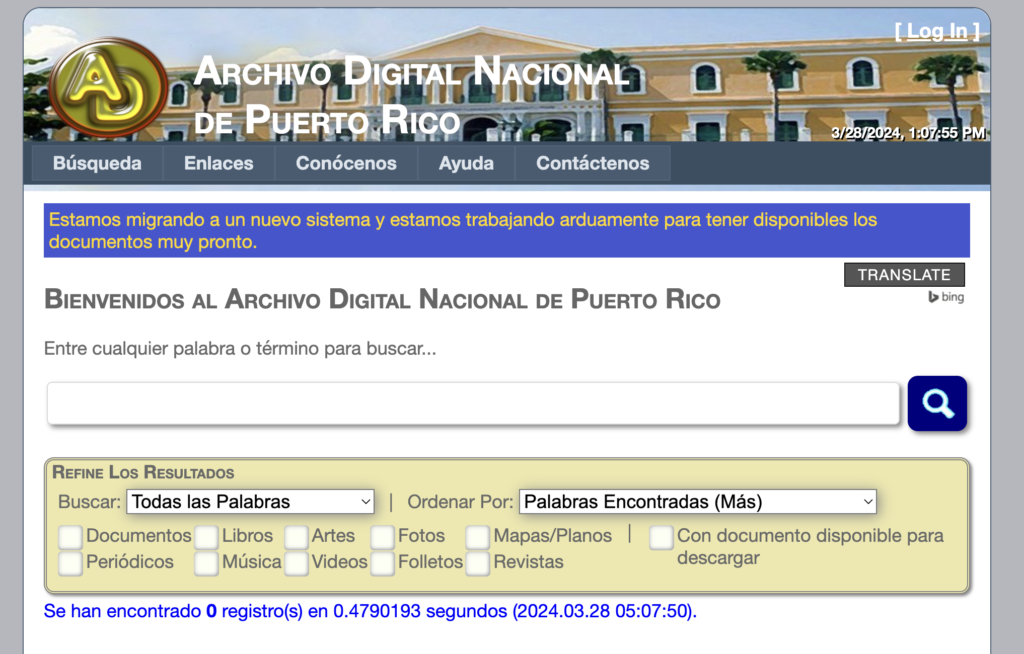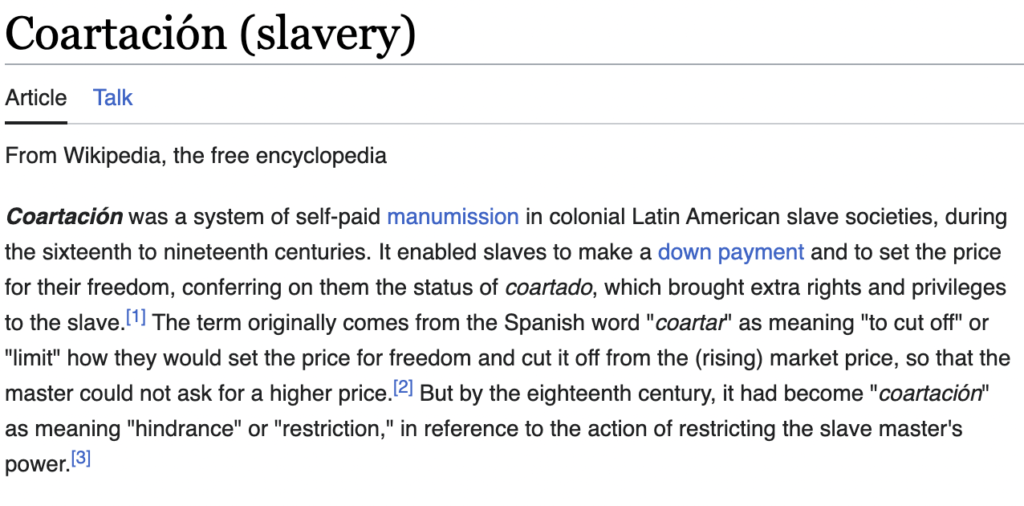While researching my Magraner family in Lares via various online databases, I came across an interesting record that allowed me to learn more about my ancestor (in this case my ancestor’s brother) and the act of coartación in regards to slavery on the island of Puerto Rico.
So in this case I will talk about Gabriel Magraner Morell and Concepción, an enslaved woman in Río Prieto, Lares, Puerto Rico.
This research was conducted with the help of the Archivo Digital Nacional de Puerto Rico – A digital archive I do not have much experience with but in this case that was very helpful!

Gabriel Magraner Morell
I have talked ad nauseam before about my Magraner ancestor, that came to Puerto Rico (specifically Río Prieto, Lares) from Sóller, Mallorca. My ancestor, Damián Magraner Morell, lived in Lares, Puerto Rico some time before heading back to the island of Mallorca where he ultimately died.
Various sources mention that Damián came to Puerto Rico with his brothers where they established “Hacienda Margarita”. A website (Jaime Montilla) mentions that Damián and his brothers, Cristóbal and Nicolás, came to Puerto Rico and it mentions that in 1874 the hacienda (plantation/estate) consisted of 293 acres. However, why was Gabriel not mentioned among the brothers?

According to my research, Gabriel Magraner was born the 15th November 1840 in Sóller, Mallorca, Spain – the son of Cristóbal Magraner Trías and Margarita Ana Morell Muntaner. Gabriel was the first son of his parents’ marriage and was subsequently named after his paternal grandfather as Mallorcan naming tradition dictated. My own ancestor being the second son of the couple received the name “Damián” in honor of his maternal grandfather “Damián Morell Morell”.
However, it seems that Gabriel died fairly early on in the brothers’ adventure in Puerto Rico, even before possibly acquiring the hacienda itself. We find a death record in San Juan, Puerto Rico the 5th May 1871 for “Gabriel Magranet Moret”, single, native of Palma de Mallorca, the legitimate son of Cristóbal Magraner and Margarita Morell, who died in “la casa de la Salud llamada San Rafael”.

Besides the inconsistency of his birthplace as Palma de Mallorca, the rest of the information lines up with what we know. I am not sure why the surname was written as “Magranet” and I have talked about this before on my journey while learning Catalan. Even when my 2nd great-grandfather died in 1981, the surname was written as “Magranet”.
How or why did Gabriel Magraner end up in San Juan? We are not sure. However, it is possible that the brothers traveled back and forth either on the island itself or between the two islands themselves (Puerto Rico and Mallorca) before settling down. Ultimately, it seems that Damián stayed on the island the longest tending to the Hacienda Margarita before he himself headed back to Mallorca where he died in 1910.
Gabriel died in a “health house” in San Juan known as San Rafael, and because this was recorded by the church it does not mention who came forward to claim his death. Equally, there is no mention of a last will and testament.
Archivo Digital Nacional de Puerto Rico
I honestly can not remember when I came across this website and unfortunately I have not explored it much since I am not able to find a lot of information on my ancestors. It seems that usually typing in a name will not be able to provide you information, if not, you need to look at the barrios and towns your ancestors lived in to see what is available and what you can find – which means, of course, that nothing is guaranteed. Hopefully more documents will be uploaded as well!
So I looked for “Río Prieto” (where my ancestors lived in Lares) to see if I could find any documents. I was able to find a census recording slaves in the town and though my Avilés family was not enslaved I decided to take a look anyways to see if I could find any family members or familiar surnames.
It was to my surprise that I ran to Gabriel Magraner listed in Río Prieto!

This record is a part of a 31 page documenting the various barrios of Lares; on page 23 we find D. [don] Gabriel Magraner Morell listed as a slave owner.
The slave in question is named Concepción, female, single, 54 years old, and a cook. In the observaciones it is listed:
“Por escritura en Lares a Don José Cesilio Cuevas, coartada en doscientos pesos”.
We will talk about the term coartada more in a bit but it seems that around the time of this document, 1867-1868, this enslaved woman Concepción was able to purchase her freedom for 200 pesos (Spanish currency at the time). I am not sure if Gabriel was in possession of other slaves either before or during this time period but we do know that he dies in 1871 in San Juan, just a few years after this padrón (census) was taken in Lares. Also, this agreement seems to have been set out before Don José Cesilio (Cecilio) Cuevas in Lares.
Coartación
I had always known about the ability, or possibility, of an enslaved person being able to purchase their freedom for their master, but I had never heard of the word coartación – which led me to researching it a bit more. Of course, my first stop was Wikipedia. The first bit gives us some information as to what it meant in regards to slavery.

It would seem that Concepción and Gabriel would have come up with a prior agreement of 200 pesos in order to free herself or at least limit his powers while she was enslaved. She worked as a cook for Gabriel which I imagine would have been in his home given that likely the brothers did not have the estate Hacienda Margarita yet.
Seeing this record and seeing my own Magraner ancestor is “slavery adjacent” (at this point) is very interesting. With the amount of acres they owned it is very possible that the family could have employed enslaved people. However, slavery ended in Puerto Rico in March 22, 1873 (its 151st anniversary just having passed) and so they likely employed (to what degree of fairness we do not know) people to work their land. Which is how I think my ancestress María Avilés ultimately came into contact with Damián Magraner.
What next?
In order to find out more about Concepción, it seems that I would need to turn to other documents (likely held in the repository Archivo General de Puerto Rico) in the content related to Lares. Likely there, we can find an agreement created by Gabriel and Concepción.
Sadly, many enslaved people can only be traced on paper through their owners or with people they were either contracted with or sold to. This is not only the case in Puerto Rico but it is the same case with the English and French Caribbean as well (as I experienced with my ancestors on Martinique) and of course the United States. This means that many times we need to turn to their documentation in order to better understand the lives of those enslaved by them.
Still, it will probably be difficult to understand the dynamics between Gabriel and Concepción. What type of relationship did they have? Did Gabriel allow her to be free only because he was knocking on death’s door? Were others like her similarly enslaved by Gabriel Magraner and/or his other brothers in Lares? What was Gabriel’s view on slavery as a recent immigrant from Mallorca to Puerto Rico?
Many of these questions will remain unanswered and the only way we will better understand this time period is by digging deeper into the records and reading the accountants left by others (both the enslavers and the enslaved).
Conclusion
As always, one genealogical questions leads me to many others. Once I get the chance to return to Puerto Rico I will see if I can find out more about Gabriel Magraner and Concepción in the Archivo General de Puerto Rico and what type of agreement they entered into. This will hopefully provide me a bit more information into the Magraner brothers’ arrival to Puerto Rico from Mallorca.
This is why searching outside of vital records is very important. It provides us other clues into the lives of our ancestors and the people they interacted with in their daily lives outside of their familial structures.
Cover image source: “Empadronamiento de Esclavos por barrios suscrito por los comisarios – 1867 [Census of slaves by neighborhoods subscribed by the commissary – 1867],” unmarked page, first entry for barrio Río Prieto, Gabriel Magraner Morell, census, 24 [month illegible – likely Sep./Oct.] 1867; Archivo Digital Nacional de Puerto Rico (https://archivonacional.com/PL/1/1/2878 : accessed 28 March 2024); citing Inventario Preliminar Fondo Municipal Lares Caja 39 Expediente 1. Image 23 of 31.

